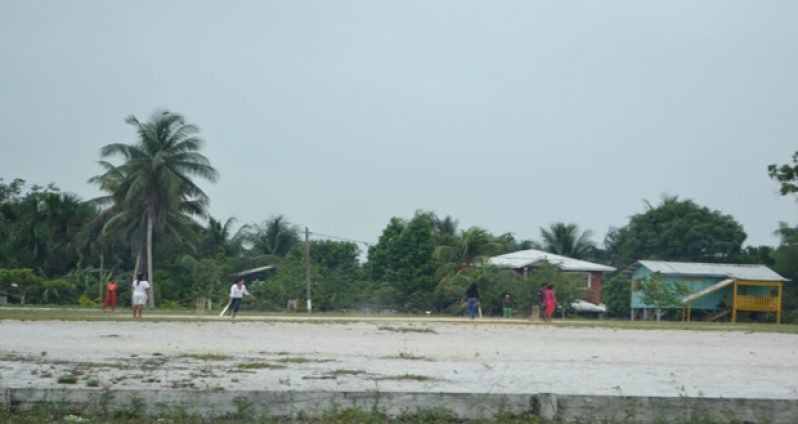By Alva Solomon
AS the community of St Cuthbert’s Mission on the Mahaica River celebrates its 127th year of existence this month, the village’s leader is banking on accountability and cultural advancement for its continued development.St Cuthbert’s Mission is located east of the Soesdyke/Linden Highway, a one-hour drive along a relatively straight sandy trail.

Toshao Lennox Shuman, a descendant of Arawak leaders, has been at the helm of the Village Council since July last year. An airline pilot, Shuman told this newspaper during a visit this past weekend that the community has been deemed the “Heritage Village” for this year’s Indigenous celebrations in September.
The village is working to develop its cultural heritage, and Shuman noted that interest is growing from villagers as September beckons. He said that last year, on the last Saturday of September, when the village hosted its annual heritage activities, the Village Council faced difficulties in finding persons to participate in the cultural aspect of the activities, such as dances.
That number was a paltry 10 persons; but, he noted, last weekend, when the village held its celebration to mark 127 years of official recognition, some 38 persons came to the fore.
He said this number is pleasing, and he noted that as September approaches, there is significant interest in participation from residents.
“I think part of it is because we have the vision, the drive, and we know how to motivate the people,” Shuman said.
ARAWAK LANGUAGE
The community is one of a few where the Arawak language is taught, and villager Leyland Clenkian is one of the residents responsible for maintaining this aspect of community life.
Shuman said the plan is to have the language taught from the nursery level up to the secondary level of school in St Cuthbert’s.

Clenkian teaches the language at his home each Saturday morning, and Shuman noted that interest in the language is significant.
“That’s a marked change from when we were growing up; you know, our parents would get a spanking just for speaking the language,” he said.
As he spoke of the cultural aspect of village life, he referred to the Amerindian dances as being in the “performing arts”, noting that the term applies to the youth of today. He said finding persons to partake in such activities, as in the years gone by, can be a difficult task.
“Some things we cannot revive, but that does not mean we cannot work with what we have and bring it to life,” he noted.
“I would say that it is necessary for us to hold onto our culture because of the people who we are,” Shuman said.
The toshao lives at the edge of the community in his own “indigenous home” made of thatched roof. The walls are made from the bark of trees, and rough lumber in some aspects.
Shuman said that returning to the community where he spent the first 16 years of his life is centred on changing the accountability aspect of community life.
LACK OF ACCOUNTABILITY
“The inspiration behind coming back is because I didn’t like the governance structure that existed in indigenous communities,” he said, noting that there is a lack of accountability.
“You find community treasuries empty,” he said, and this area of governance contributes to the underdevelopment of indigenous communities.

“I came here to hopefully change the system, so that people who come after me will sit in a better position,” he said. He said that having that as a model is important, since having a system of accountability starts with leadership.
“If you don’t have objective leadership you can never have accountability,” he posited. He added that if anyone asks for the records, he/she is welcome to examine them.
“You had a run-around before you can look at anything,” he said. Now the books are open, and even the village councillors are abreast with what’s happening on the council, even though communication is almost absent since no mobile services are available in some parts of the village.
AMERINDIAN ACT
Shuman also sits on the National Toshao’s Council as the second-in-charge, and one of the areas he wishes to see examined is the amendment of the Amerindian Act.
He said the United Nations’ Declaration of the Rights of Indigenous Peoples, which was implemented after the Amerindian Act, “needs to find its way in the Act”.
He said the Act does not meet the minimum requirement of the UN’s declaration, and he noted that since Guyana is a signatory to the UN, this should be corrected.

“I think once we start moving in that direction, then you will see that the governance structure will start to take a better course and the preservation of Indigenous people will start to take a better course,” he explained.





.jpg)








